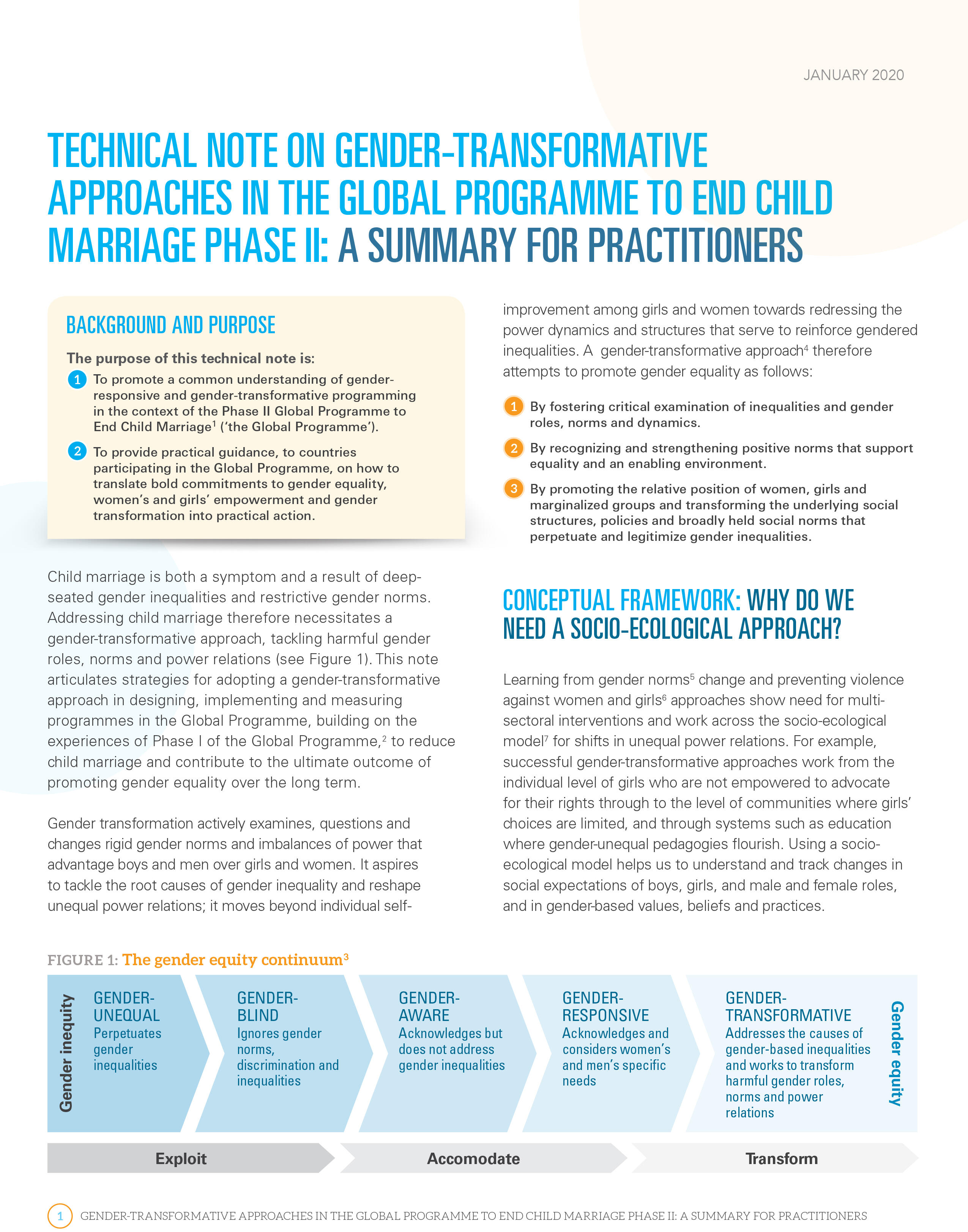Child marriage is both a symptom and a result of deep-seated gender inequalities and restrictive gender norms. Addressing child marriage therefore necessitates a gender-transformative approach, tackling harmful gender roles, norms and power relations. This note articulates strategies for adopting a gender-transformative approach in designing, implementing and measuring programmes in the Global Programme, building on the experiences of Phase I of the Global Programme, to reduce child marriage and contribute to the ultimate outcome of promoting gender equality over the long term. Also provides a summary of examples and key areas to be considered by practitioners in the field.
